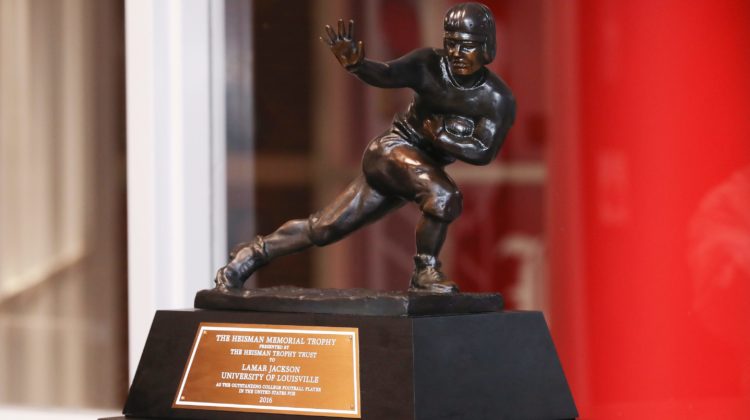
Heisman voting needs an overhaul; Here’s how to fix it
NEW YORK (BVM) – The very first Heisman Trophy – an award only players east of the Mississippi were originally eligible for – was first awarded in 1935 and since 1936, the annual honor has been bestowed upon the most outstanding player in college football.
In the nearly 100 years since the inception of college football’s oldest award, nothing has changed about its voting process.
A group of 900-plus Heisman voters – made up of 870 media voters (145 voters from each six regions), previous Heisman winners (currently 57 prior winners eligible to vote) and fans who constitute one Heisman vote – decide who takes home the iconic trophy.
BVM Sports College Football Analyst Brad Edwards was a Heisman voter for 12 seasons and believes the voting process is not only outdated but requires an overhaul.
“When you go back then, there was no TV, people couldn’t watch a team on the other side of the country play and there obviously was going to be some, if not a ton of, regional bias in the voting,” Edwards said. “There are too many people voting who don’t even watch college football on a regular basis because they must have the same number (of voters) in every region which means a place like the Northeast, where I live, where college football isn’t that big, you still have to have the same number of voters as you have in the Southeast or the Midwest or the Southwest. So, inevitably, there are people who aren’t paying as much attention.
“Then there are others who, any given Saturday, are paying really close attention to one team that they cover but they might not be watching all the other teams as closely as they should be to be a Heisman voter.”
Edwards points out that many media voters – who make up the majority of the Heisman ballots – are trained to simply follow the ball when watching games. For those who have played or coached at the collegiate level and beyond, the ability to “see everything at once” is prevalent.
“There are so many former players and coaches who work in the national media covering college football and their job is to not just watch one team but to watch as many as possible every week,” Edwards said. “I think there should be a panel of, let’s just say, 20-25 voters of former players and coaches who are in those positions … let those people who have the trained eyes and are watching every game vote on who they believe is the most outstanding player.”
Edwards believes that this solution will not only result in the right people deciding on the Heisman Trophy, but it’ll also help with the positional diversity of winners. Since 2000, only four non-quarterbacks have been awarded the Heisman Trophy.
The trend hasn’t slowed as Georgia QB Stetson Bennett, Ohio State QB C.J Stroud, TCU QB Max Duggan and USC QB Caleb Williams were named the 2022 Heisman Trophy finalists.
“If you do this, every now and then, you will have a lineman win,” Edwards said. “I can’t speak for everyone, but for me, that would do honors for the credibility of this award, especially if it was a lineman who wasn’t on a playoff-contending team. That’s what it should be about and now the pieces are in place for that to be able to happen.”



